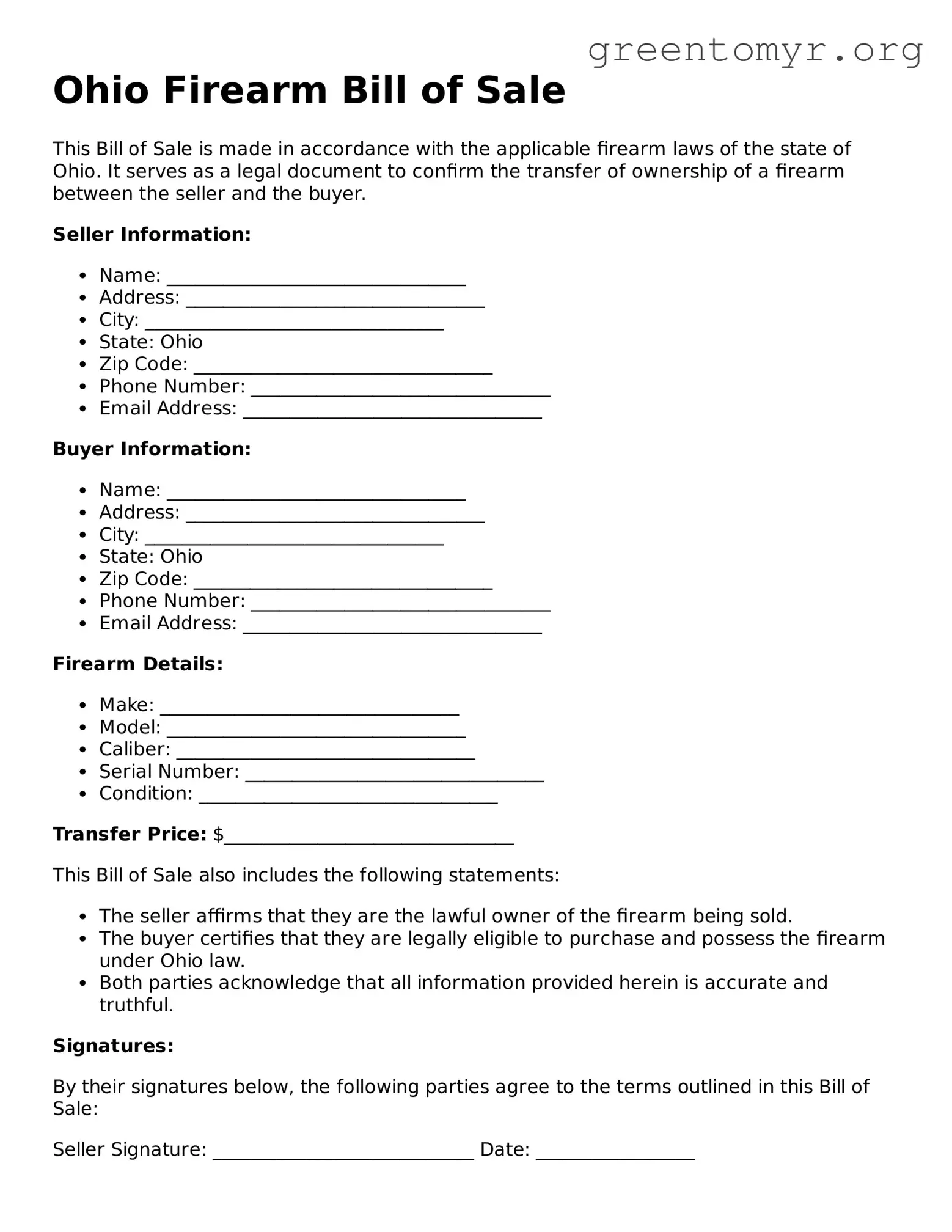Filling out the Ohio Firearm Bill of Sale form can seem straightforward, but there are common mistakes that can lead to complications. One frequent error is not providing accurate identification information. This includes the names, addresses, and driver's license numbers of both the buyer and seller. When any detail is incorrect or missing, it may raise issues during a background check or lead to disputes later on.
Another mistake is failing to include a complete description of the firearm. It's essential to specify the make, model, caliber, and serial number clearly. Omitting any of this information could hinder the traceability of the firearm and create problems in the future.
Many individuals also neglect to sign the form. Both the buyer and seller must provide signatures to validate the transaction. Without these signatures, the bill of sale lacks legal standing, which could cause issues if ownership questions arise later.
Some people mistakenly think the date of the transaction is unimportant. However, documenting the exact date is crucial for record-keeping and for determining the transfer of ownership. A missing or incorrect date can complicate matters in cases of theft or legal inquiries.
Additionally, individuals often overlook the necessity of retaining a copy of the completed bill of sale. Both parties should keep a copy for their records. Failure to do so can lead to confusion regarding ownership or terms of the sale should any disputes arise afterward.
Not verifying the eligibility of the buyer is another significant mistake. Sellers have a responsibility to confirm that the buyer is legally allowed to purchase a firearm. Failing to assess the buyer's eligibility can result in serious legal consequences for the seller.
Some may misinterpret the requirement for notarization. While notarization is not mandatory in Ohio, having it can provide an added layer of protection. This step is often overlooked and could enhance the document’s credibility if disputes occur.
Another common error is neglecting to document any agreed-upon conditions of sale. If there were specific terms, such as payment method or warranties, these should be included in the bill of sale. Not documenting these terms can lead to misunderstandings down the line.
People sometimes assume that a verbal agreement alone is sufficient. This belief is misguided; a written document is critical for legal protection. Without it, any verbal promises may be challenging to enforce.
Finally, some individuals fail to check the form for errors after completion. Even minor typos can lead to problems. Taking a moment to review the document can prevent many of these potential pitfalls.
